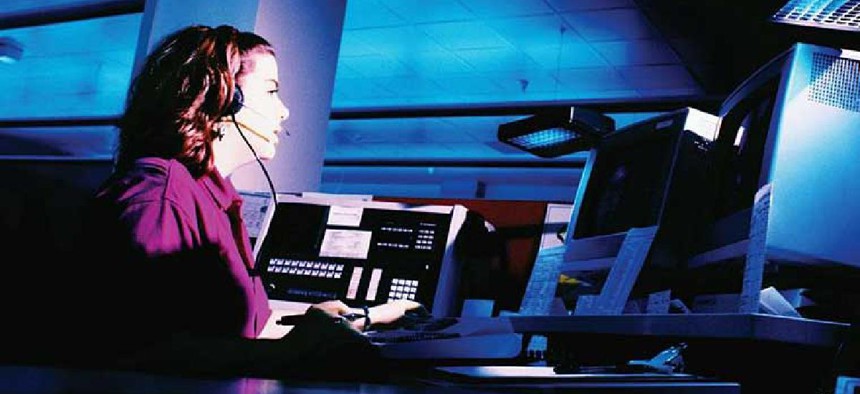Protecting 911 from unwanted robocalls


Connecting state and local government leaders
The Federal Communications Commission is looking into preventing unwanted robocalls from tying up public safety phone systems, diverting critical responder resources from emergency services and impeding the public’s access to emergency lines.
The Federal Communications Commission is looking for information on how to prevent unwanted robocalls from reaching public safety answering points (PSAPs).
FCC first adopted a PSAP Do-Not-Call registry in 2012 to address autodialer-initiated calls, which were tying up public safety lines, diverting critical responder resources from emergency services and impeding the public’s access to emergency lines
Now the commission is proposing that “voice service providers be required to block autodialed calls made to PSAP telephone numbers on the PSAP Do-Not-Call registry,” according to a document recently posted in the Federal Register. To inform that decision, the FCC wants updated information about how the issue for PSAPs has changed since 2012.
For instance, FCC wants to know if technological advances resulted in more unwanted autodialed calls or if any blocking technologies have come out since 2012 that could help PSAPs better protect themselves from such calls.
It also has questions on cybersecurity:
- “Are there situations in which entities that intended to disrupt PSAP operations used autodialers or similar technologies in denial-of-service attacks to disrupt the provision of emergency services?
- “How do those incidents shed light on the risk and potential harms that might result from the misuse of registered PSAP numbers?
- “Are there new or evolving robocall threats to PSAPs that the registry is not designed for or otherwise cannot address? If so, are there ways to adapt the registry to such threats?”
In response to those security concerns, FCC proposes that registered outbound telephone numbers used to make autodialed calls be provided to voice service providers to identify those autodialed calls that should be blocked when made to registered PSAP numbers.
What’s more, FCC proposes giving voice service providers access to the PSAP phone numbers and outbound autodialer phone numbers already on the PSAP Do-Not-Call register and requiring those providers to block any calls originating from a registered autodialer to a registered PSAP.
These proposals bring up other questions, including whether such blocking is feasible for voice service providers and how to avoid erroneous blocking, how to ensure that the registry remains accurate and whether call blocking would “raise the risk that a malicious actor could reverse-engineer a list of PSAP numbers by determining what calls have been blocked.”
FCC also seeks alternative solutions to the registry should the call-blocking proposal not work out: “For example, could the Commission require callers to filter their autodialed calls through a hardware or software platform that would house an encrypted list of registered PSAP numbers and would be able to block autodialing equipment from making calls to these numbers?” If such technologies exist, FCC wants to know their cost effectiveness, and if they do not, what it would take to develop them.
A third area of inquiry looks at the Telephone Consumer Protection Act of 1991 and how an April Supreme Court decision may have affected how it defines an “automated telephone dialing system.” The decision states that “a necessary feature of an autodialer … is the capacity to use a random or sequential number generator to either store or produce phone numbers to be called.” As a result, FCC wants to know if that narrows the type of equipment that falls within the definition, limiting the number of callers subject to the prohibition on autodialing registered PSAP numbers.




